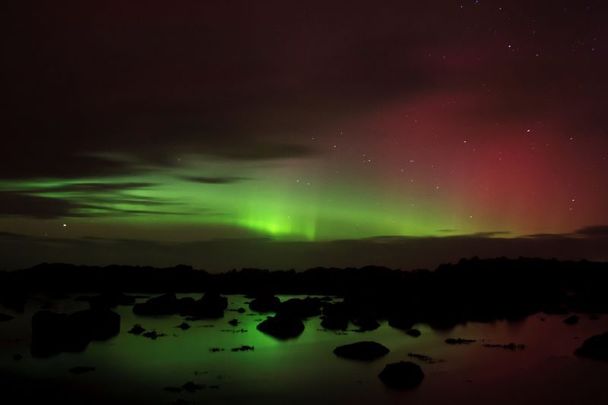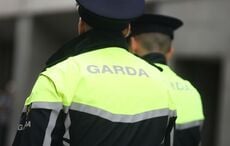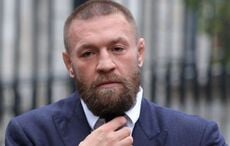The Aurora Borealis, also known as the Northern Lights, were seen across Ireland over the weekend thanks to the perfectly clear weather conditions.
Aurora Alerts Ireland said on Monday afternoon that Ireland was treated to "one of the biggest aurora displays in years," which included a "rare" Steve phenomenon on Sunday night.
STEVE - Ireland treated to a rare atmospheric optical phenomenon last nighthttps://t.co/JOUL2DYJkb#eire #astronomy #europe #aurora #northernlights #auroraborealis #steve pic.twitter.com/OJzbJnjYs2
— Aurora Alerts Ireland (@auroraalertsIRE) November 6, 2023
The group said the next period to watch for Northern Lights in Ireland would be from November 8 "when a fast moving solar wind stream will arrive at earth from a large coronal hole and could bring more aurora displays."
On Saturday, Aurora Alerts Ireland shared this fantastic video of the Northern Lights over Co Sligo:
Here is a real-time video of the Aurora I recorded of this evenings display which was easily visible by eye.
Location Mullaghmore, Sligohttps://t.co/RDKdlaMr10#aurora #ireland #sligo #northernlights #auroraborealis pic.twitter.com/9v9g5zKCwI
— Aurora Alerts Ireland (@auroraalertsIRE) November 4, 2023
Stargazers across Ireland took to social media throughout the weekend to share their own photos and videos of the Northern Lights displays.
X (formerly Twitter) user Tom Gilroy shared these spectacular shots of the Aurora Borealis from Co Fermanagh on Saturday:
The Aurora Road in Boho Fermanagh tonight @barrabest @Official_WXUK @angie_weather @bbcweather @bbcniweather @BBCNewsNI @ChrisPage90 @WeatherAisling @StormHour pic.twitter.com/FsCSvChIvV
— Tom Gilroy (@tomgilroy33) November 4, 2023
This incredible timelapse of the Northern Lights over Skerries in Dublin was shared on X, formerly Twitter, by Sryan on Sunday:
U N B E L I E V A B L E#skerries #aurora #dublin #ireland pic.twitter.com/ON770Lf9ds
— Sryan (@SnowbieWx) November 6, 2023
Irish X user Mark McGuire shared this stunning snap from The Curragh in Co Kildare on Monday:
The Northern Lights over the famous footsteps in Donnolly’s Hollow on The Curragh. What a night in Ireland! pic.twitter.com/4paRVLmEPj
— Mark McGuire (@MarkMcGuire_Irl) November 6, 2023
Photographer Ger Holland shared this picture from Dun Laoighaire on Sunday night, which also included a shooting star:
The Aurora Borealis, a shooting star, a plane & the lights of the East Pier in Dún Laoghaire, with Howth in the distance.
Another one of my favourites from last night... just breathtaking. ?#Auroraborealis #NorthernLights #LoveDublin #DiscoverDublin pic.twitter.com/6CYhhWcrTq
— Ger Holland (@GHollandPhoto) November 6, 2023
What are the Northern Lights?
As per Ireland's meteorological service Met Éireann, the Northern Lights (or Aurora borealis in the northern hemisphere) are the results of collisions between gas particles in our atmosphere and charged particles ejected from the Sun’s atmosphere.
The color of the Northern Lights will change due to the type of gas particles that are colliding. Oxygen molecules at approximately 100 km above the earth produce a greenish-yellow color while, while a red aurora can be seen when high-level oxygen molecules are involved. Blue or purple auroras indicate the presence of nitrogen molecules.
The hotter it is, the more energy is available, Met Éireann says. This leads to collisions between gas molecules and at such high temperatures, these collisions can be explosive. As the Sun rotates, particles are ejected through holes in its magnetic field. These charged particles make up the solar wind and this wind carries the free particles toward the Earth’s atmosphere.
The Northern Lights captured from Cork this evening. I still can’t believe the light visibility was so strong this far south!! #Auroraborealis #auroraireland #northernlights #cork #northcork pic.twitter.com/g5O2r3JNdc
— Shaunagh O'Connell (@ShaunaghOC) November 5, 2023
Generally speaking, these charged particles are deflected by the Earth’s magnetic field, but at the poles, the magnetic field is weaker, and because of this some of these particles enter the Earth’s atmosphere and collide with gas particles. The collisions produce light and this is what we call the Northern Lights.
Met Éireann says that the Northern Lights are best observed in locations with very small amounts of light pollution. Parts of the west and north coast of Ireland would offer the greatest chance of seeing the display.
There are a number of forecast services for the Northern Lights, including the National Oceanic and Atmospheric Administration (NOAA), which provides a 30-minute forecast for the Aurora.
I never thought I'd see the day the Northern Lights over Rossaveal and Connemara ?? #northenlights @AimsirTG4 @CarlowWeather @WeatherRTE @auroraalertsIRE pic.twitter.com/YJe2SaHByF
— Eoin ? ?? (@Eoinfah) November 5, 2023




Comments